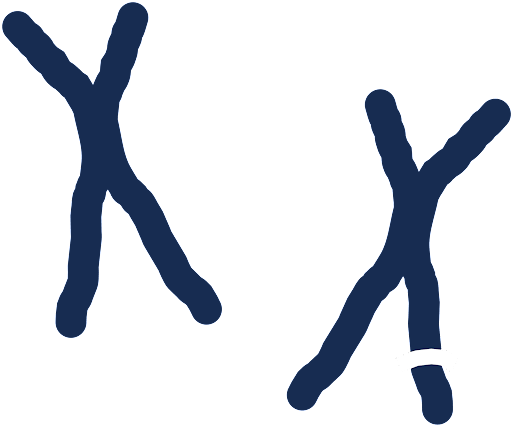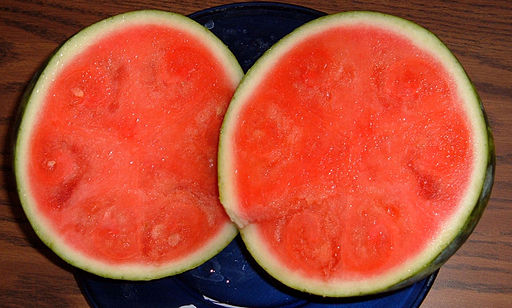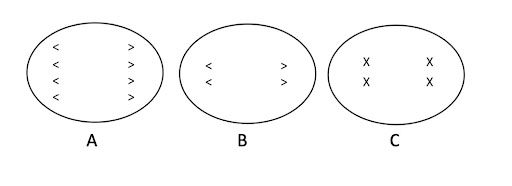Wrap-Up Questions
1. What is the difference between a chromosome, a chromatid, and a DNA molecule?
2. The human genome in somatic cells is 2n=46.
- What is the chromosome number in human egg and sperm cells?
- For each of the following stages of the cell cycle, indicate how many chromosomes and how many DNA molecules would be in a human cell.
-
- G1
- G2
- Prophase I of mitosis
- Prophase II of mitosis
3. The mouse genome is 2n=40. For each of the following stages of meiosis or mitosis, indicate chromosome number (n) and DNA content (C).
- Somatic cell in G1 phase of the cell cycle
- Somatic cell in G2 phase of the cell cycle
- Primary spermatocyte in Prophase I
- Secondary spermatocyte in Prophase II
- Spermatozoa (sperm cell) after meiosis II is complete
4. Figure 17 shows flow cytometric analysis of DNA content for human colon cancer cells treated with several different drugs that affect the cell cycle8. Etoposide and Paclitaxel are chemotherapy drugs currently in use. VX-680 was in clinical trials for leukemia and colon cancer but was discontinued.
- In the DMSO control image, label the areas that correspond to G1, S, and G2 phases of the cell cycle.
- The x-axis indicates DNA content (C). What scale do each of the hash marks represent?
- Etoposide triggers a checkpoint-induced arrest of the cell cycle[1]. Based on these data, at which checkpoint do you think the cell cycle was blocked? Explain your reasoning.
- Both Paclitaxel and VX-680 induce the appearance of additional peaks, indicated by the arrows in Figure 17. What do you think those peaks represent, and what might have happened to the cell cycle to cause these results?


5. Double strand breaks in chromosomes can result in afragment of a chromosome without a centromere, as shown in Figure 18.
- What role does the centromere play during mitosis and meiosis?
- What might be the consequence to daughter cells if mitosis occurred before this damage could be repaired?
6. Some people have mosaic Down Syndrome: they have some cells with 46 chromosomes (46, XX or 46, XY) and some with 47 (47, XX +21 or 47, XY+21). Nondisjunction in what cell types might cause mosaic Down Syndrome? Explain your reasoning.

7. Seedless watermelons are triploid, offspring of a cross between diploid and tetraploid parents. They are seedless because the odd-ploidy genome cannot complete meiosis. The tetraploid watermelons are produced by treating diploid watermelon shoots with colchicine, a drug that disrupts microtubules[2]. Explain why disrupting microtubules could lead to tetraploidy in some treated plants.
8. The illustrations below show dividing cells from the same organism.
- Indicate whether each illustration shows anaphase, anaphase I, or anaphase II.
- How would you describe the ploidy of the parent organism: 2n=?

The following questions were adapted from Online Open Genetics (Nickle and Barrett-Ng), Chapter 2.
9. For a diploid with 2n=16 chromosomes, how many chromosomes and chromatids are per cell present in the gamete and zygote and immediately following G1, S, G2, mitosis, and meiosis? Bread wheat (Triticum aestivum) is a hexaploid. Using the nomenclature presented in class, an ovum cell of wheat has n=21 chromosomes. How many chromosomes in a zygote of bread wheat?
10. Bread wheat (Triticum aestivum) is a hexaploid. Using the nomenclature presented in class, an ovum cell of wheat has n=21 chromosomes. How many chromosomes in a zygote of bread wheat?
11. For a given gene:
- What is the maximum number of alleles that can exist in a 2n cell of a given diploid individual?
- What is the maximum number of alleles that can exist in a 1n cell of a tetraploid individual?
- What is the maximum number of alleles that can exist in a 2n cell of a tetraploid individual?
12. Why is aneuploidy more often lethal than polyploidy?
13. Which is more likely to disrupt gene balance: polyploidy or duplication?
14. For a diploid organism with 2n=4 chromosomes, draw a diagram of all of the possible configurations of chromosomes during normal anaphase I, with the maternally and paternally derived chromosomes labeled.
Science and Society
15. Virtually all of the bananas sold in grocery stores are genetically identical Cavendish bananas, but this was not always true. Up until the mid-1950’s, the Gros Michel banana was the main variety of banana sold in the US. The Gros Michel bananas, like the Cavendish, are triploid and can only be propagated through cuttings.
-
- Why can organisms with an odd number ploidy typically not reproduce via sexual reproduction?
- What are the risks of a clonal population? To answer this, use outside sources to find out why the Gros Michel banana is no longer the top banana.
- What is the evolutionary advantage to sexual reproduction?
- Massey, A. J. Multiparametric Cell Cycle Analysis Using the Operetta High-Content Imager and Harmony Software with PhenoLOGIC. PLOS ONE 10, e0134306 (2015). ↵
- Seedless Watermelon Breeding – Cucurbit Breeding. https://cucurbitbreeding.wordpress.ncsu.edu/watermelon-breeding/seedless-watermelon-breeding/. ↵

